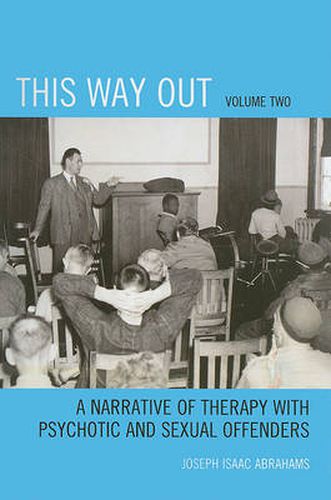Readings Newsletter
Become a Readings Member to make your shopping experience even easier.
Sign in or sign up for free!
You’re not far away from qualifying for FREE standard shipping within Australia
You’ve qualified for FREE standard shipping within Australia
The cart is loading…






This Way Out, a report of work done six decades ago in Howard Hall, the maximum security section of St. Elizabeth’s Hospital in Washington, D.C., is immediately pertinent to today’s forensic and mental health crises. The two volumes of this work help fill a need for specific data on what transpires in psychotherapy, especially that of sexual and psychotic offenders. In an era prior to medication, the therapist employs a version of Freudian analysis and adapts it to groups, both large and small. A sophisticated program resulted, in which a spiritual component, messianism, is pivotal. The author relates this dramatic story through his narrative accounts of 629 sessions. Early in the work, he presents the microanalysis of a session, to make explicit what he and the members said and did to alter their severe personal and social alienation. An informal running commentary, journalist headlines, and annotated bibliography assist the reader in the exploration and comprehension of this extensive work.
$9.00 standard shipping within Australia
FREE standard shipping within Australia for orders over $100.00
Express & International shipping calculated at checkout
This Way Out, a report of work done six decades ago in Howard Hall, the maximum security section of St. Elizabeth’s Hospital in Washington, D.C., is immediately pertinent to today’s forensic and mental health crises. The two volumes of this work help fill a need for specific data on what transpires in psychotherapy, especially that of sexual and psychotic offenders. In an era prior to medication, the therapist employs a version of Freudian analysis and adapts it to groups, both large and small. A sophisticated program resulted, in which a spiritual component, messianism, is pivotal. The author relates this dramatic story through his narrative accounts of 629 sessions. Early in the work, he presents the microanalysis of a session, to make explicit what he and the members said and did to alter their severe personal and social alienation. An informal running commentary, journalist headlines, and annotated bibliography assist the reader in the exploration and comprehension of this extensive work.